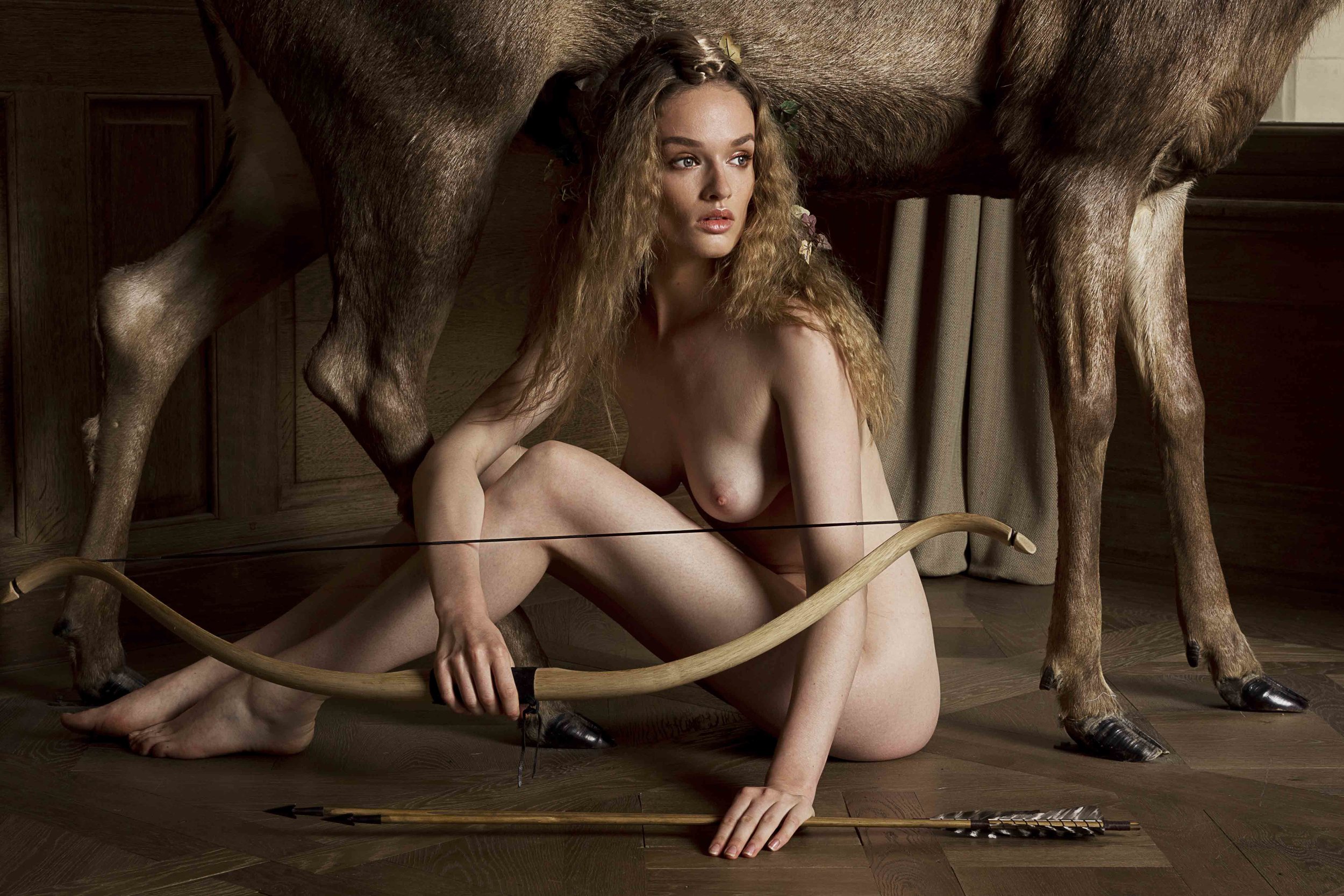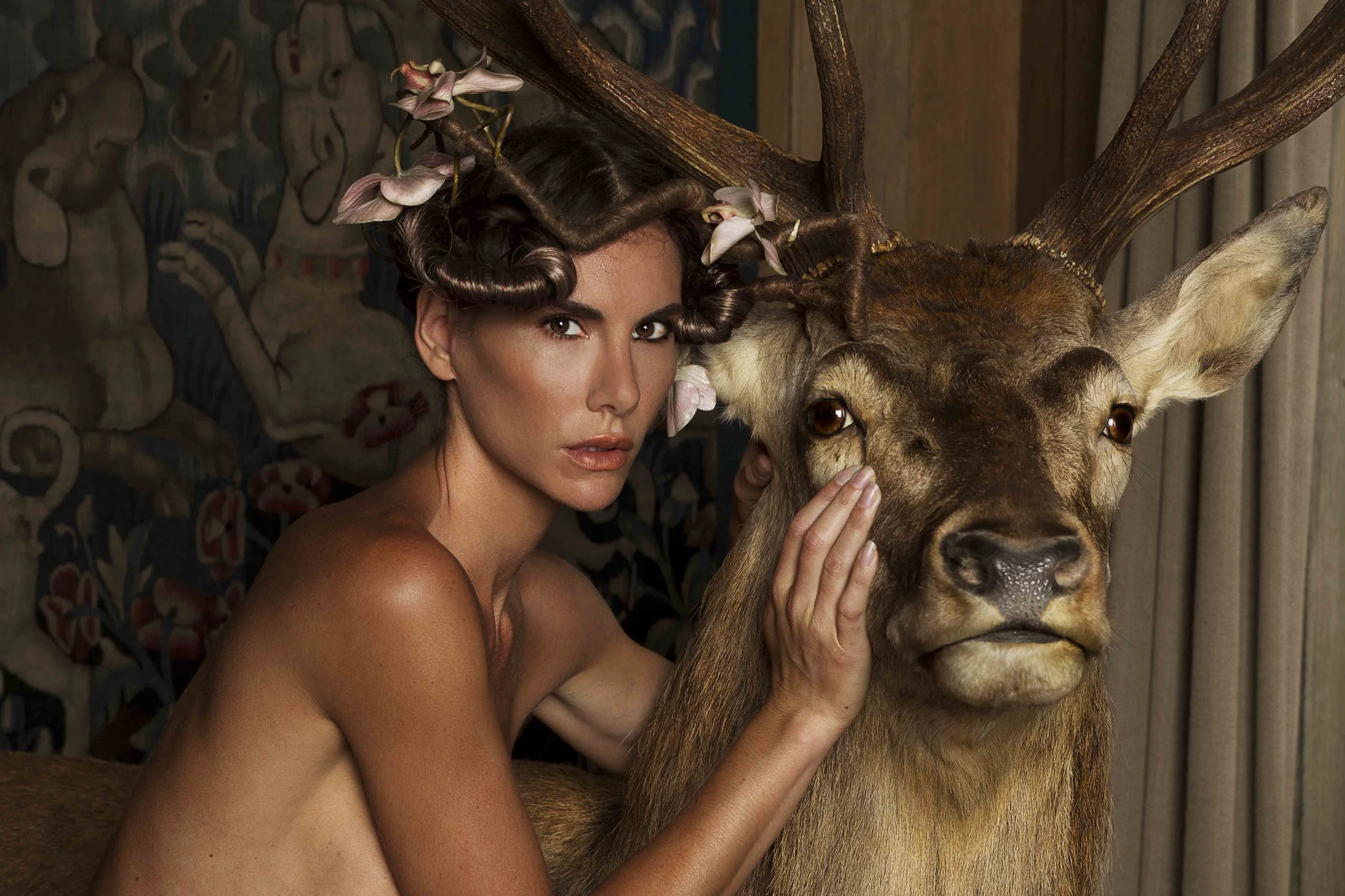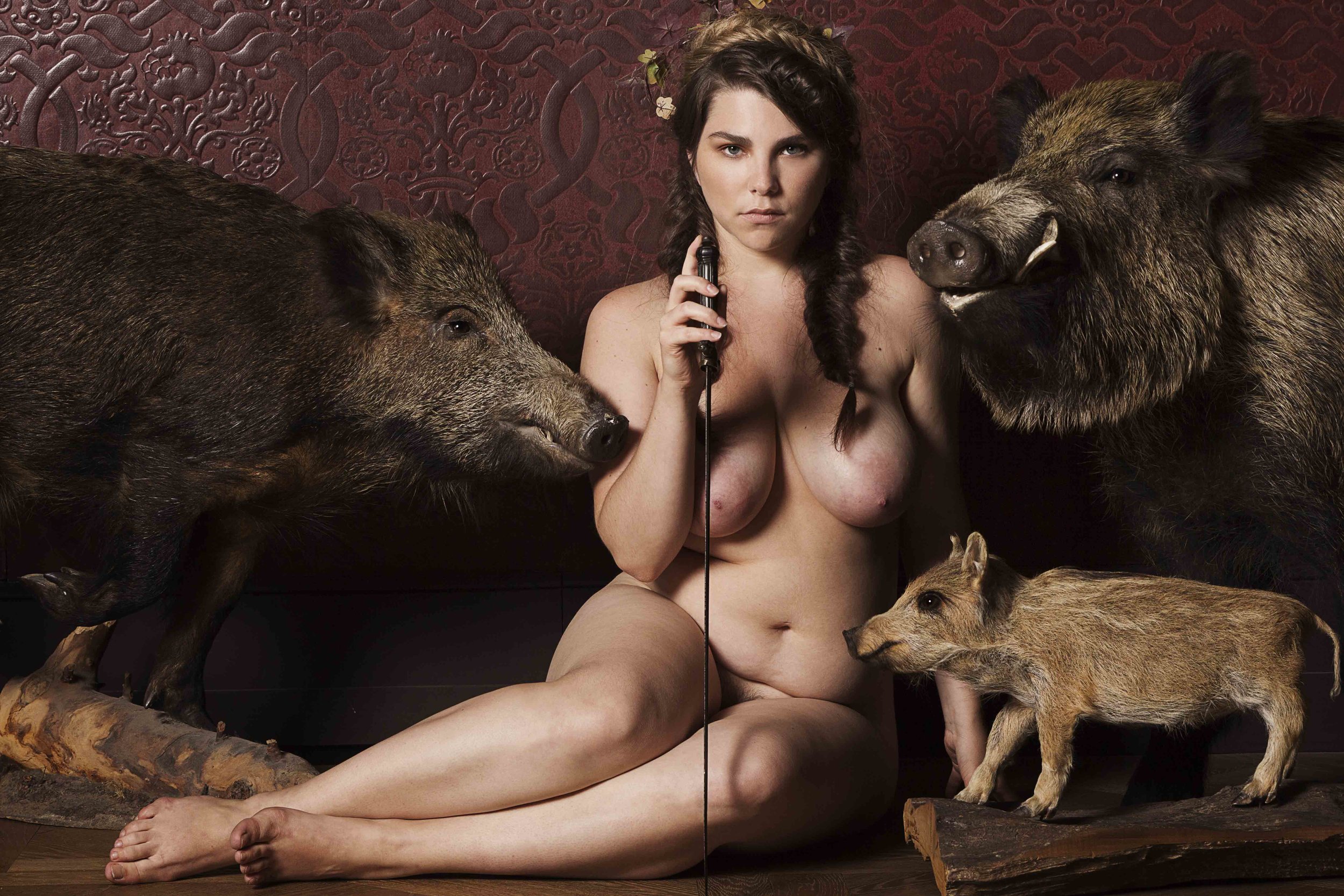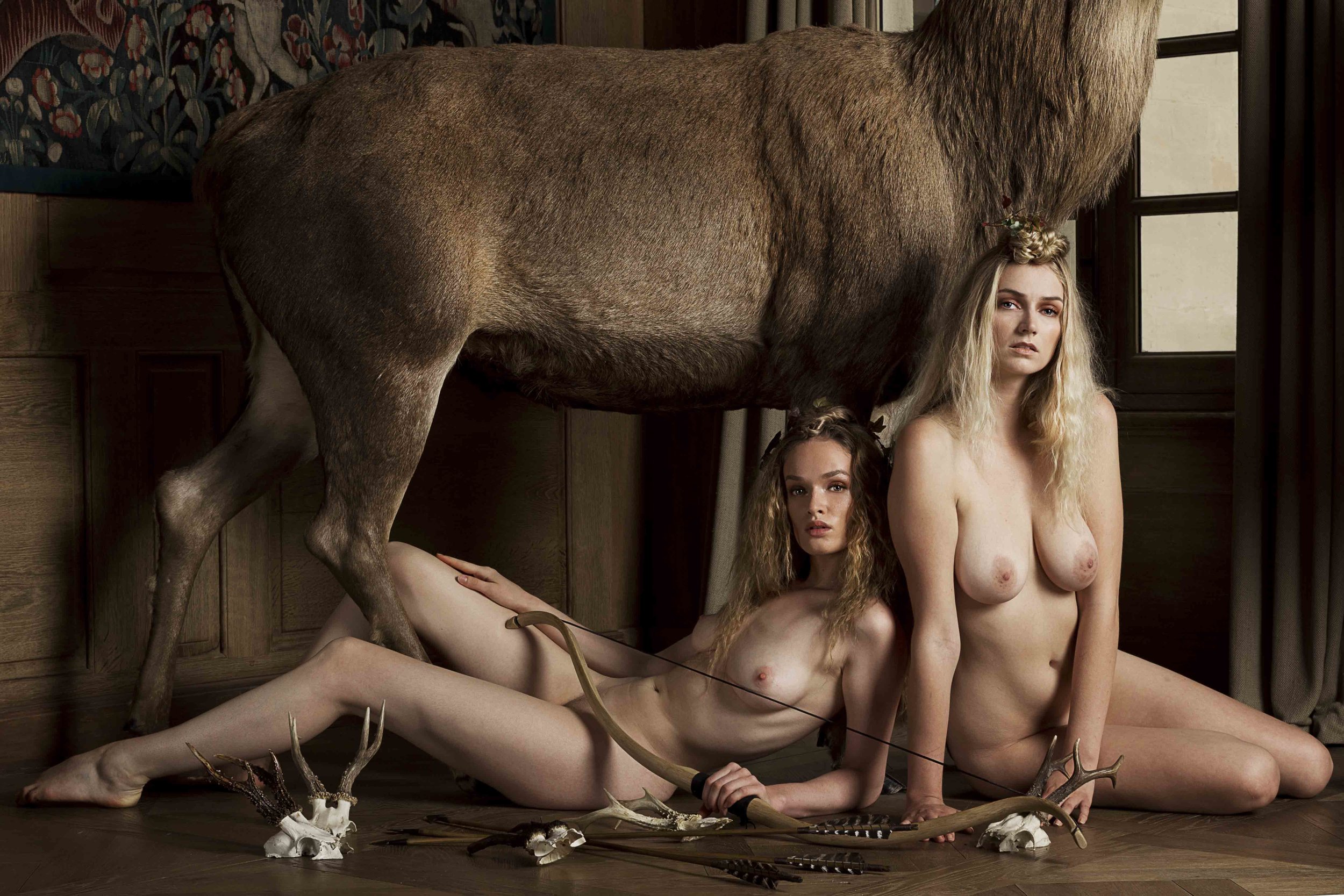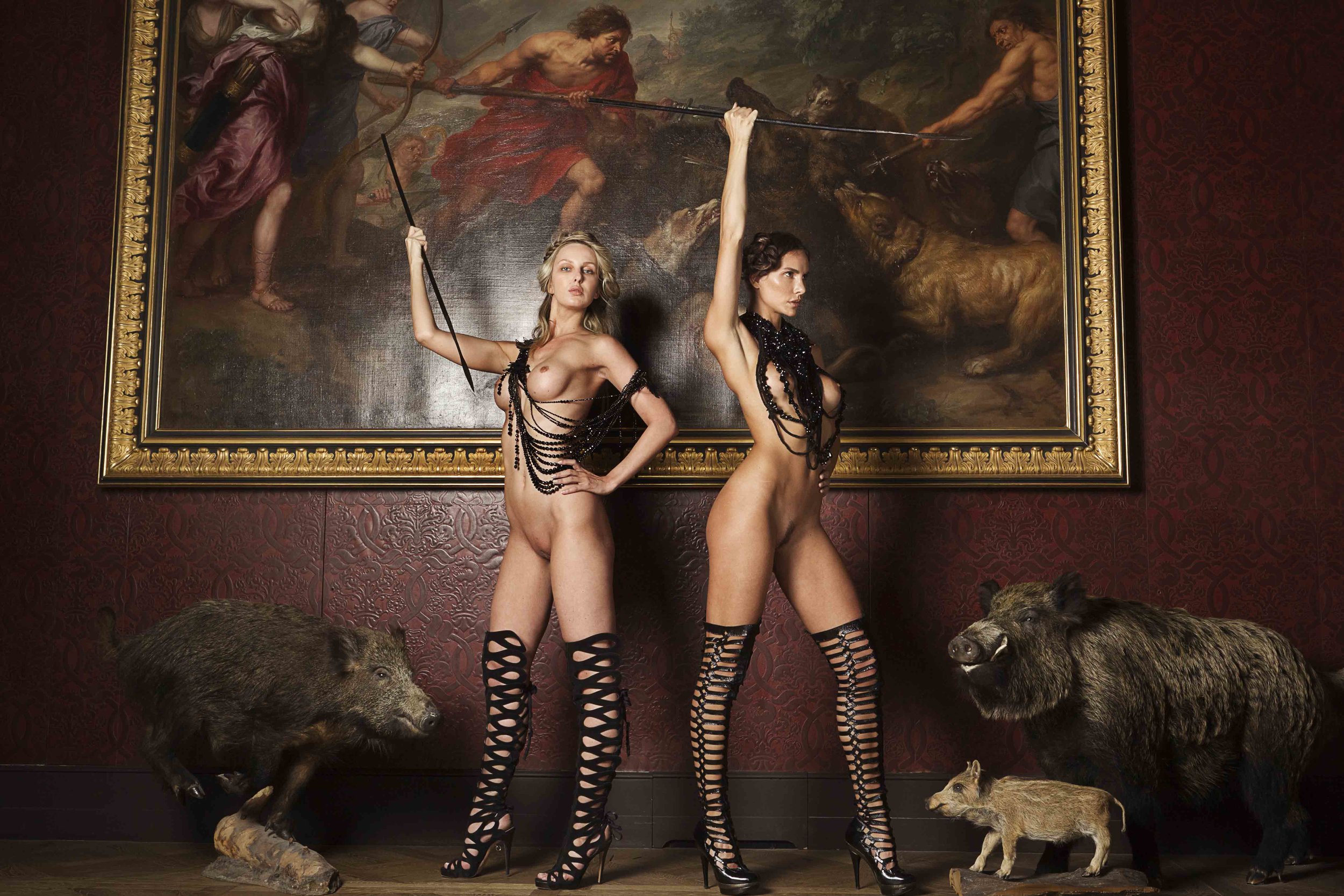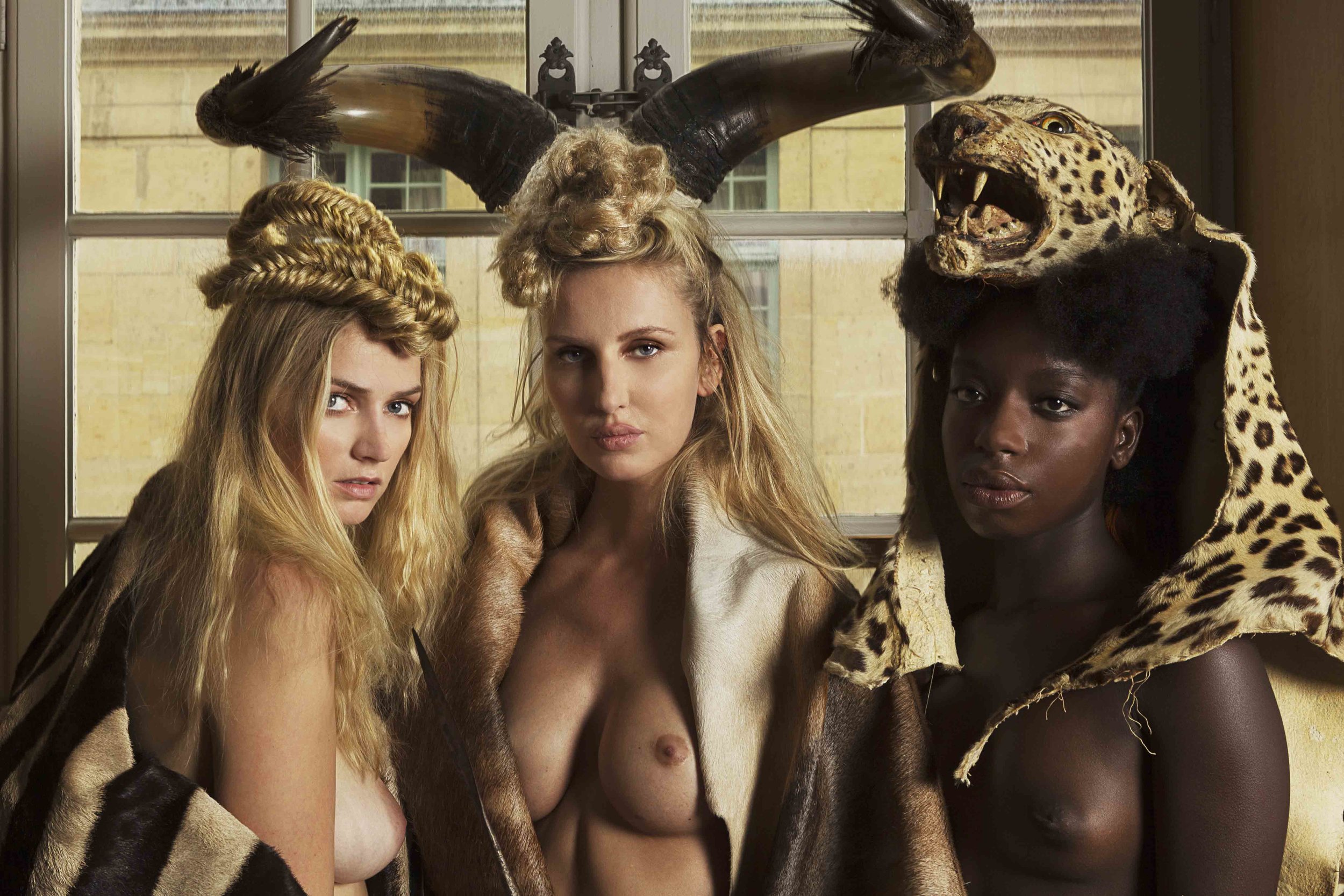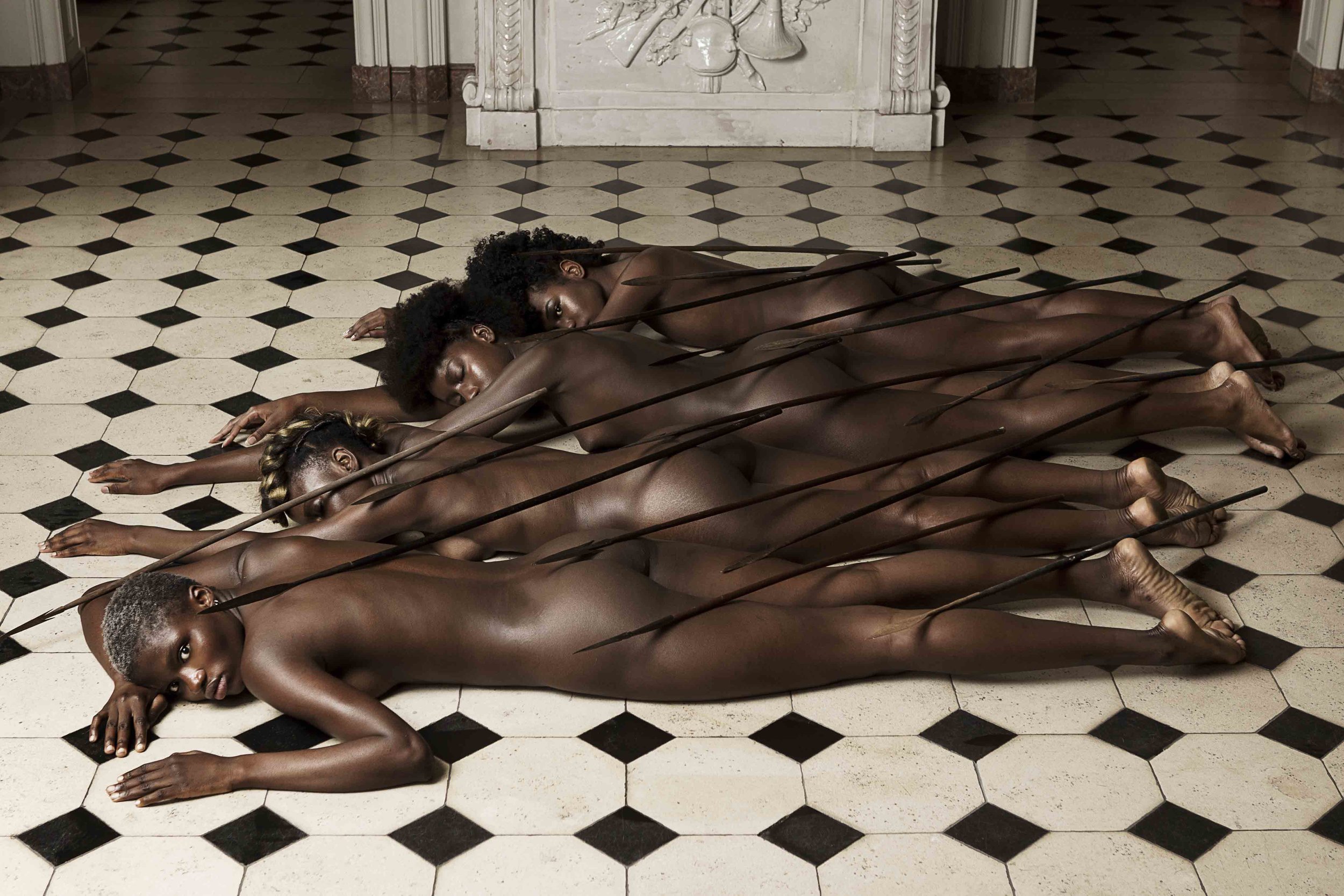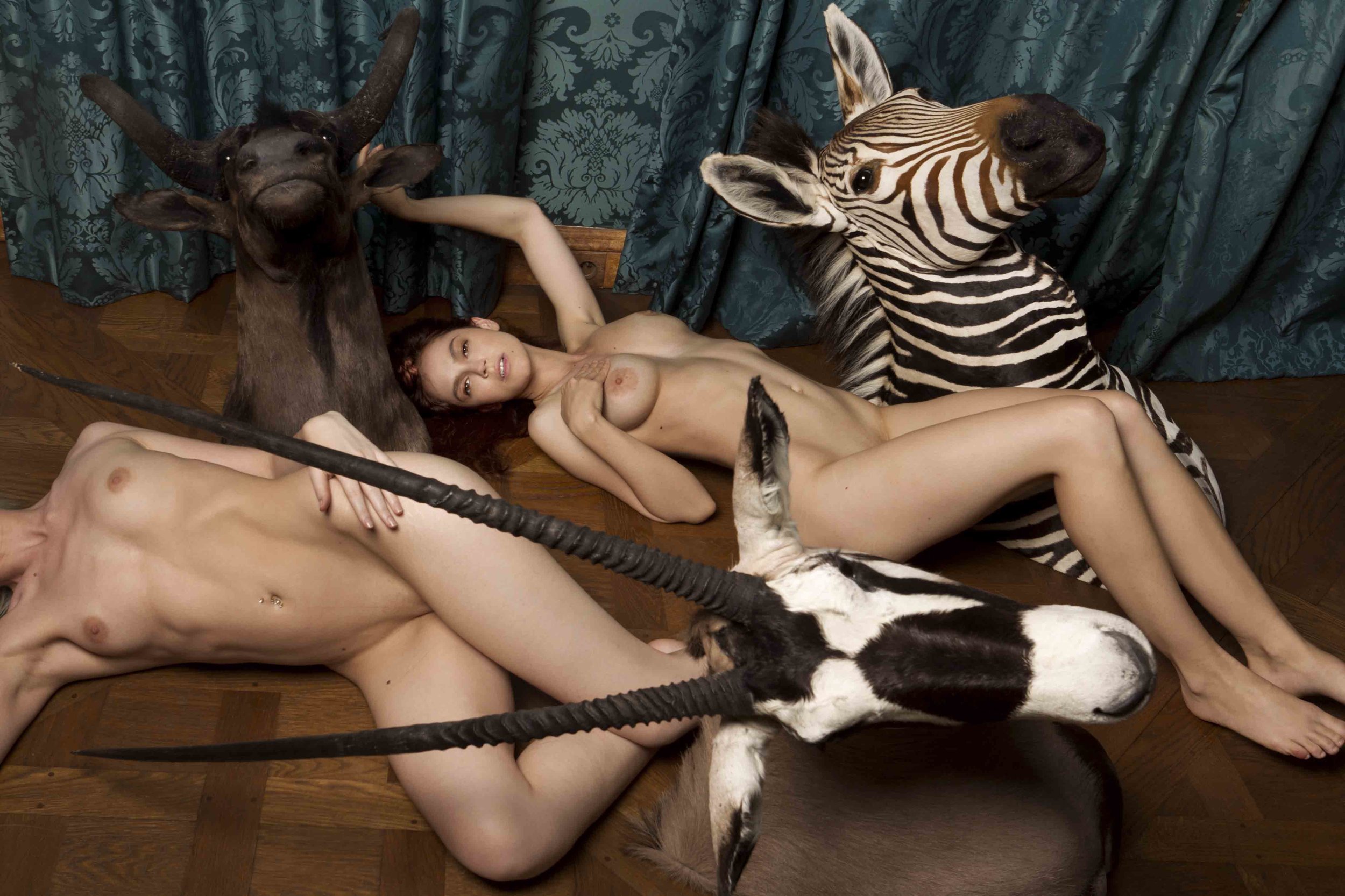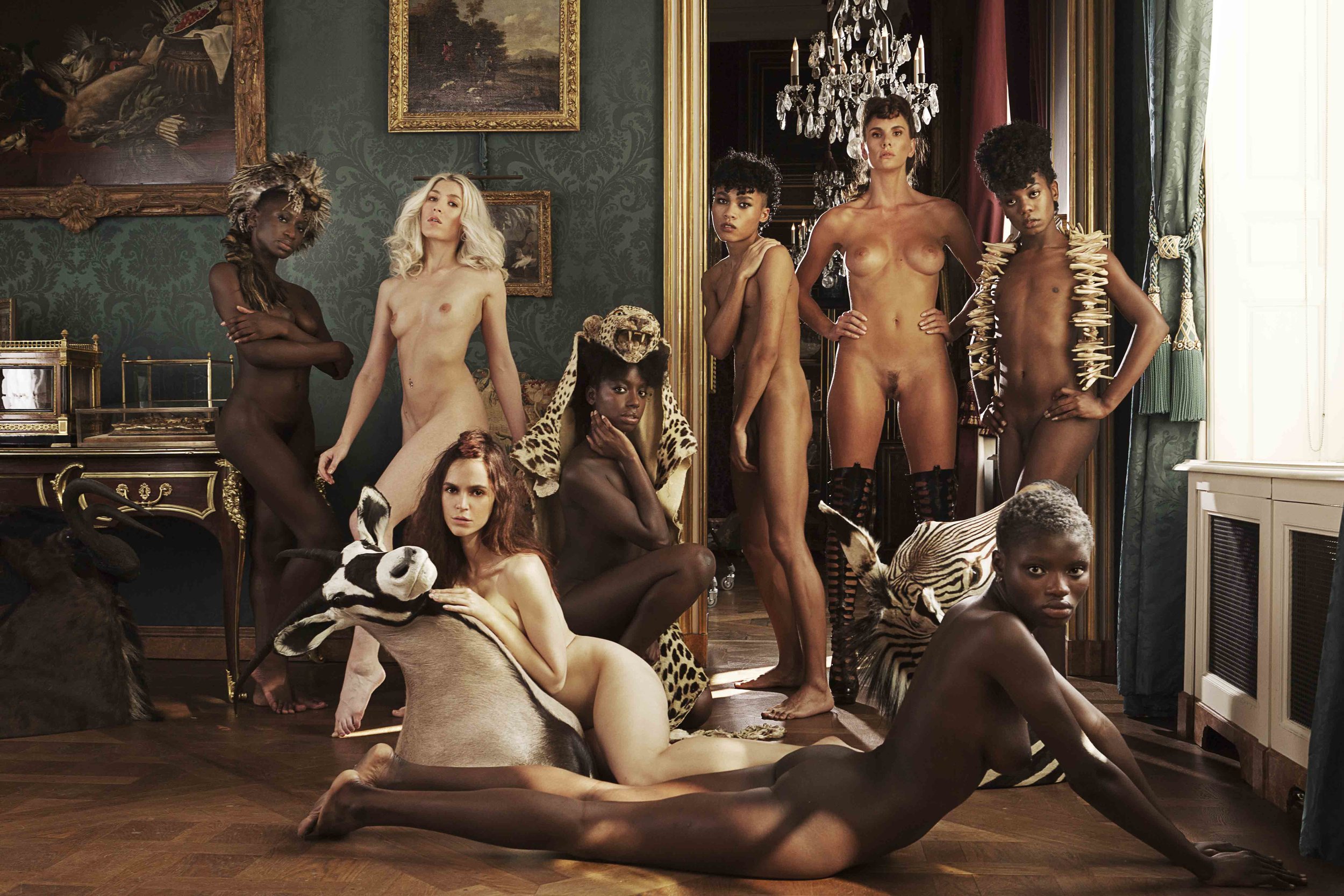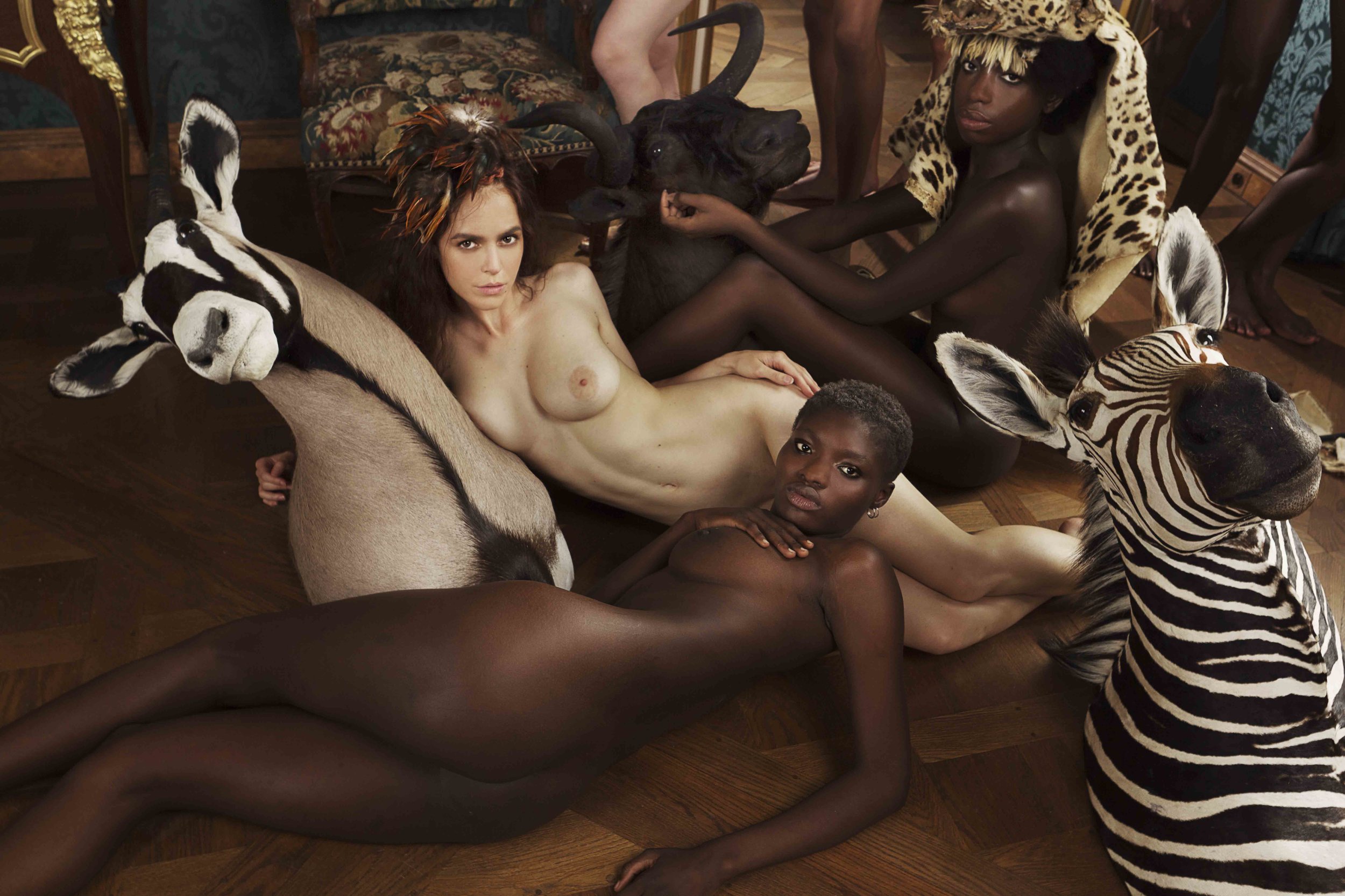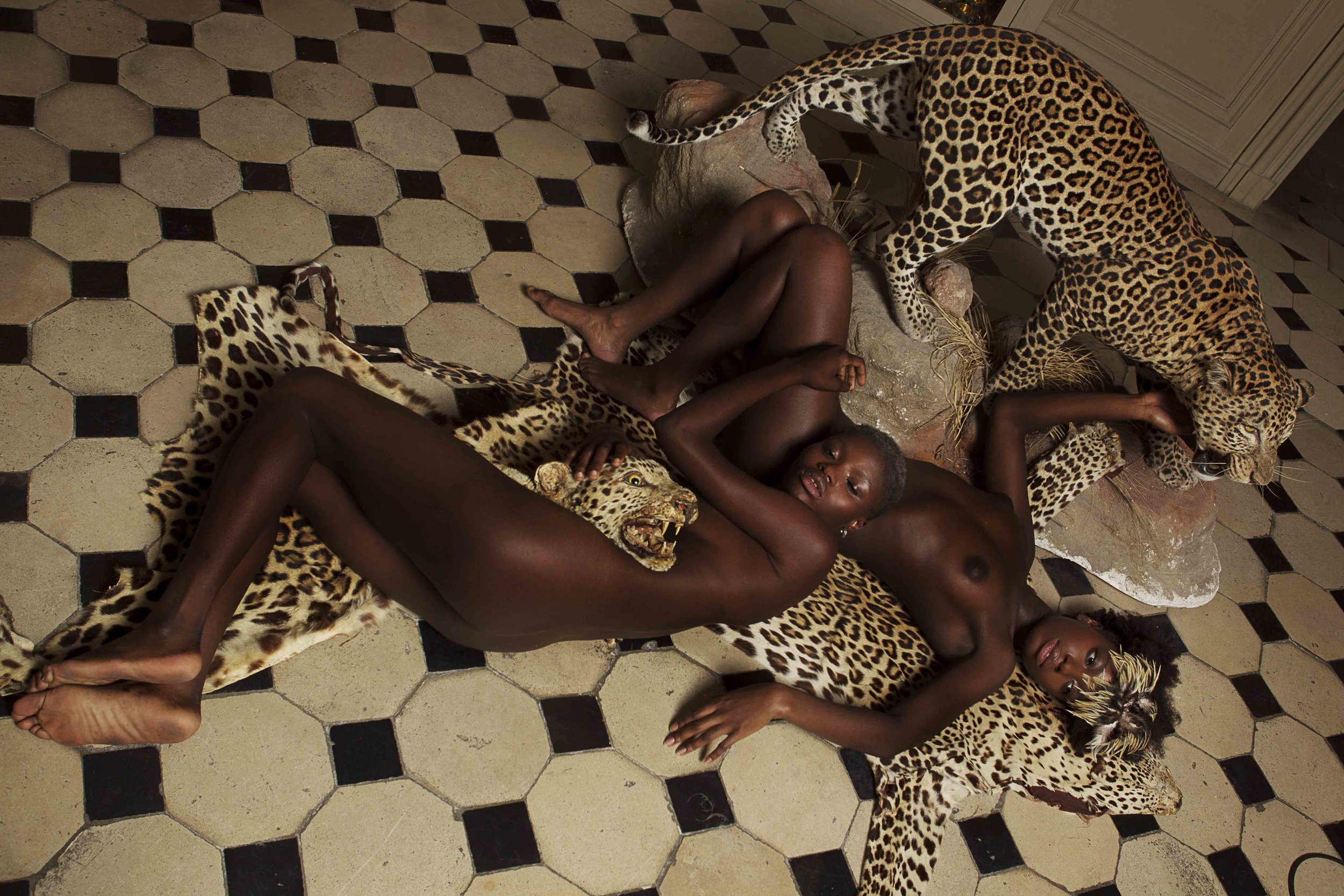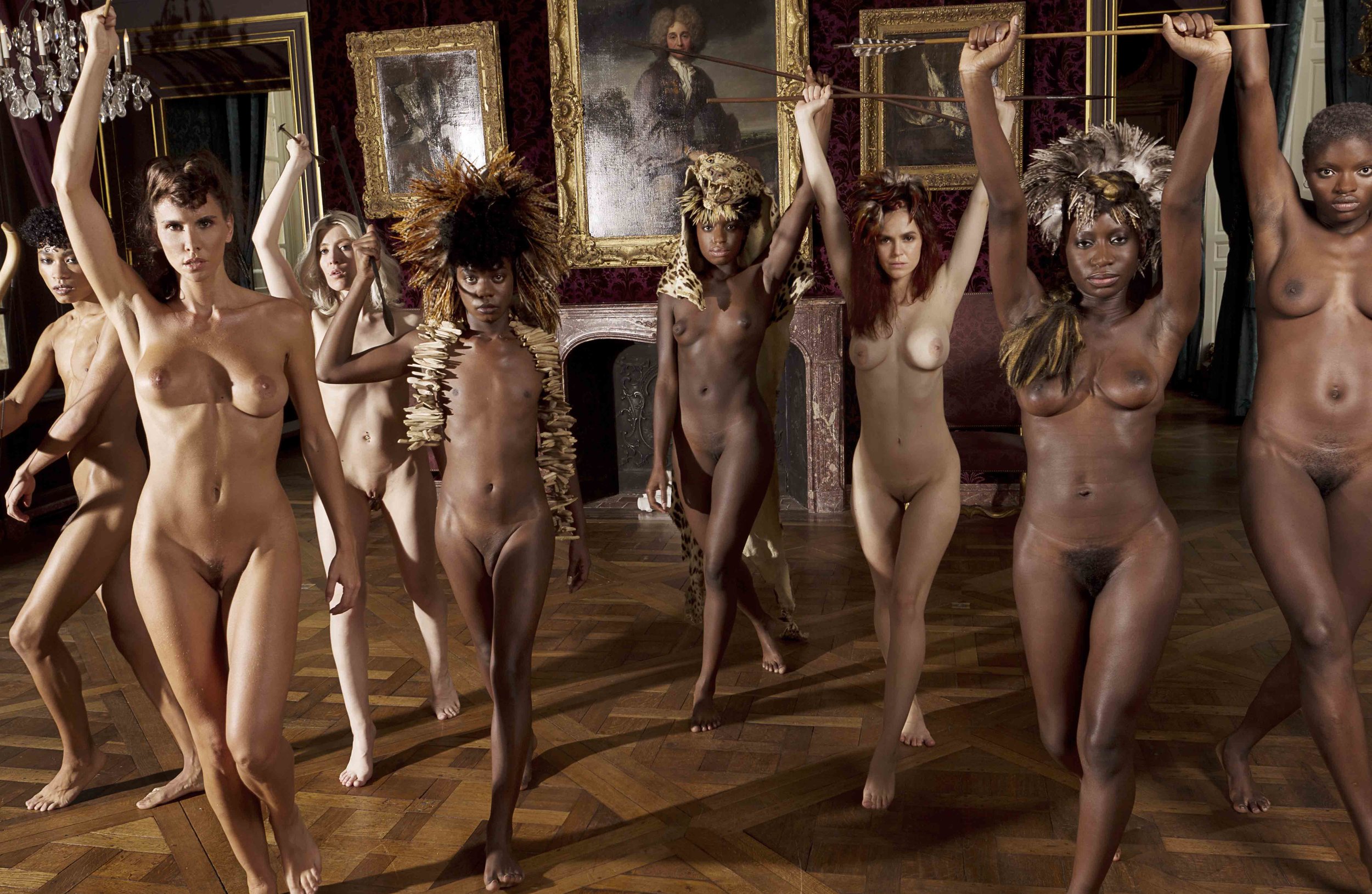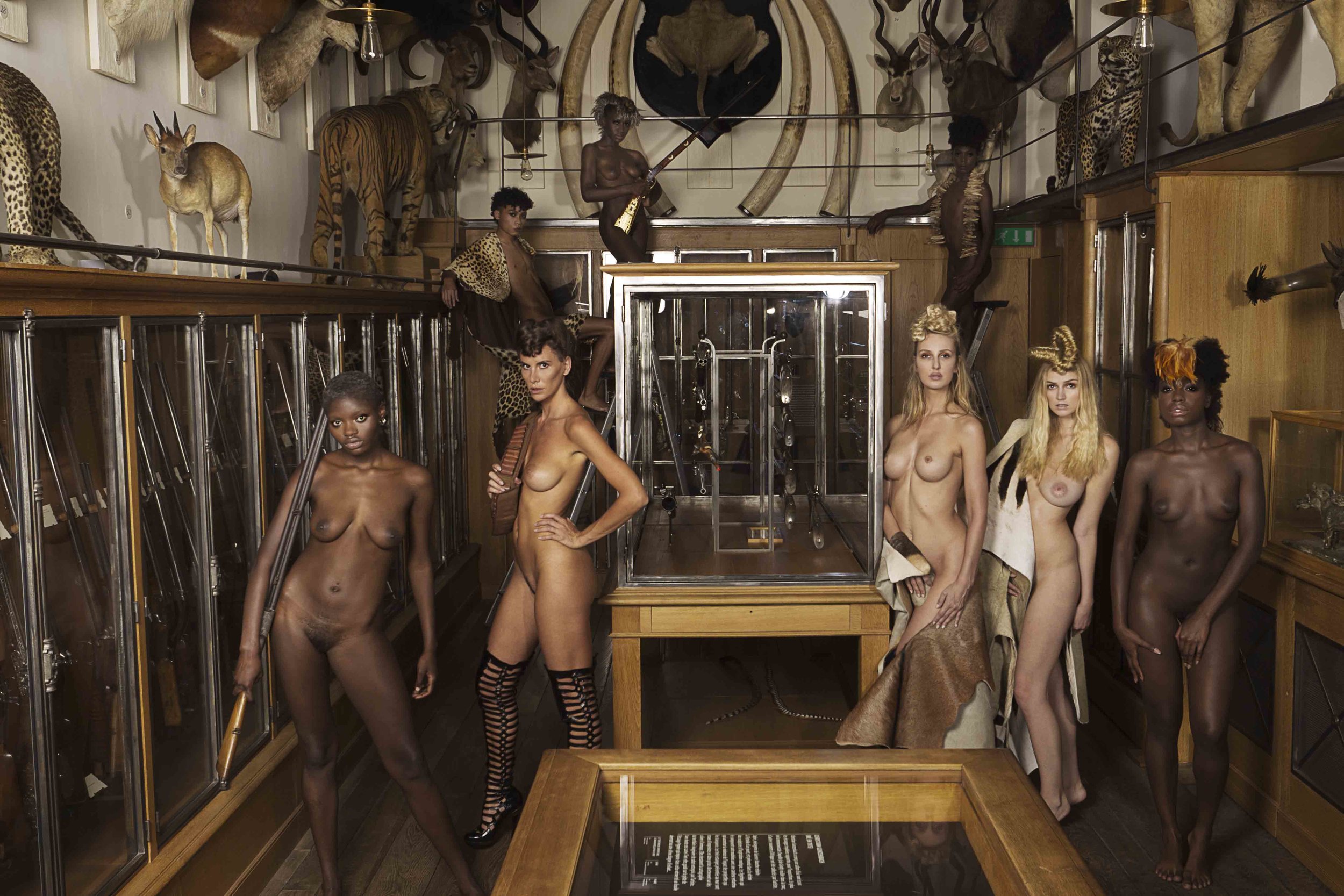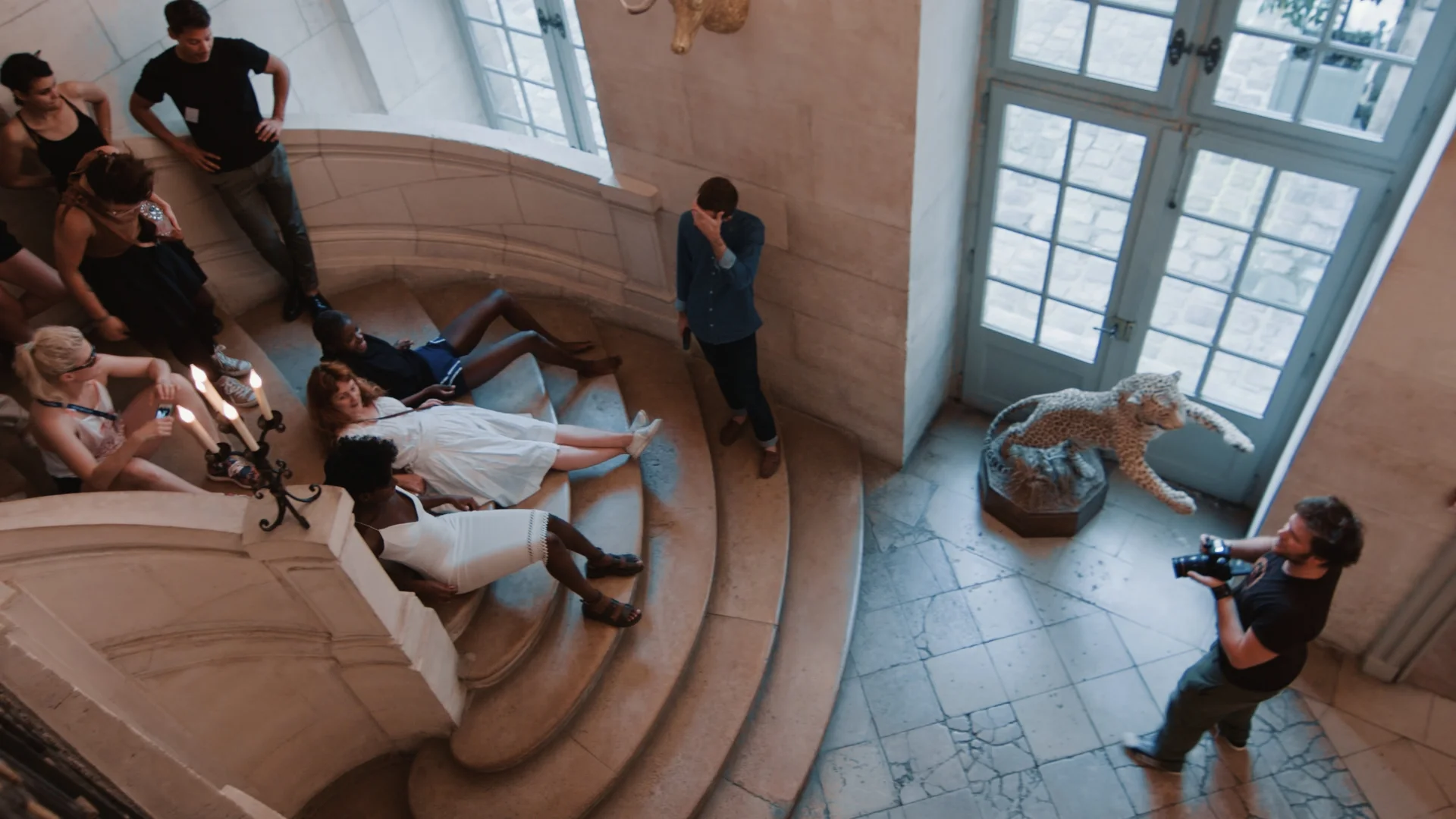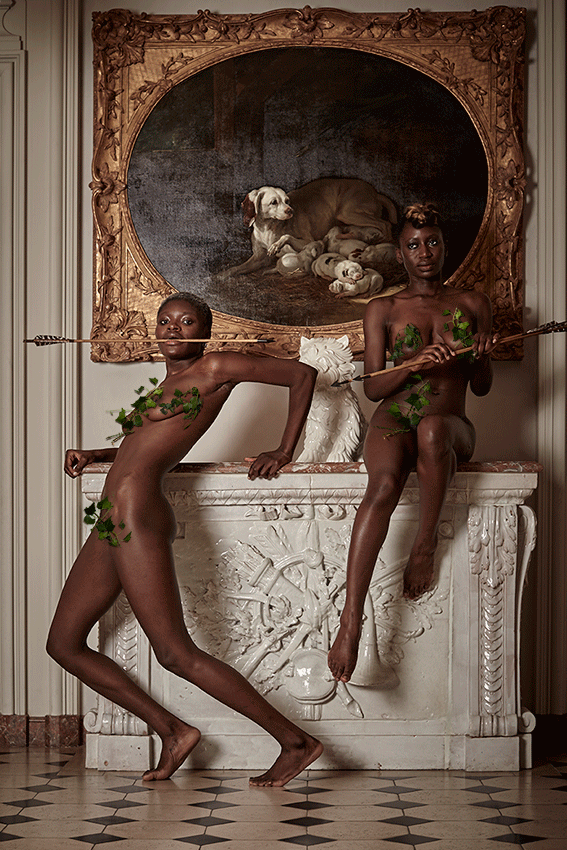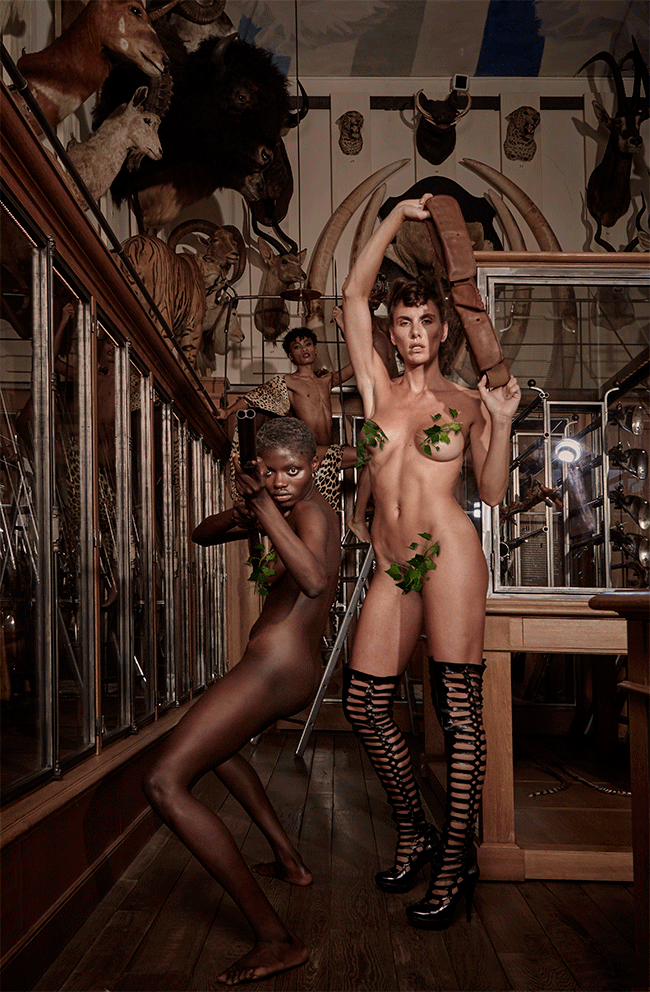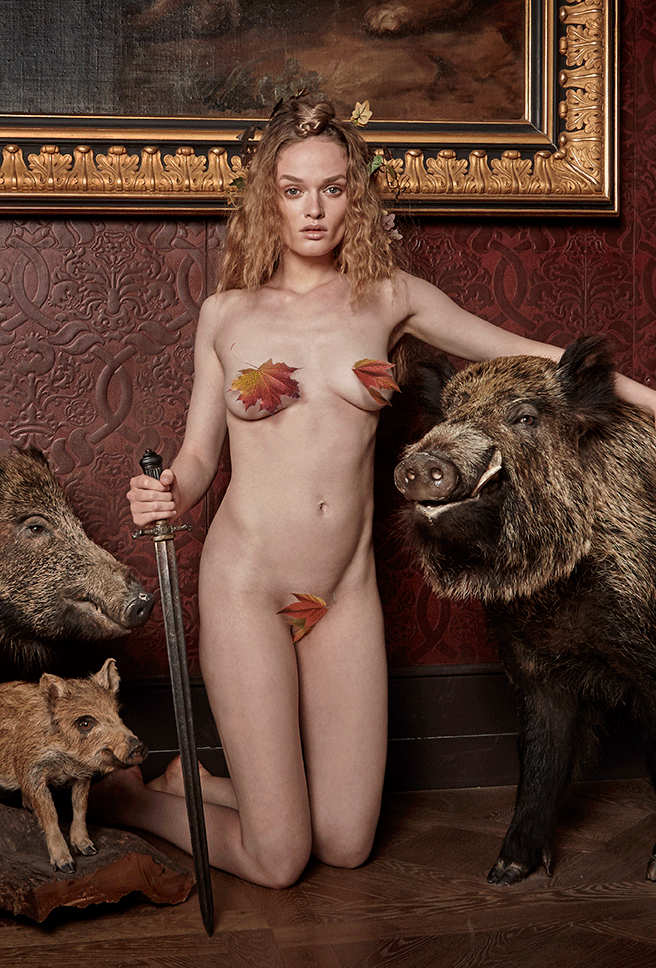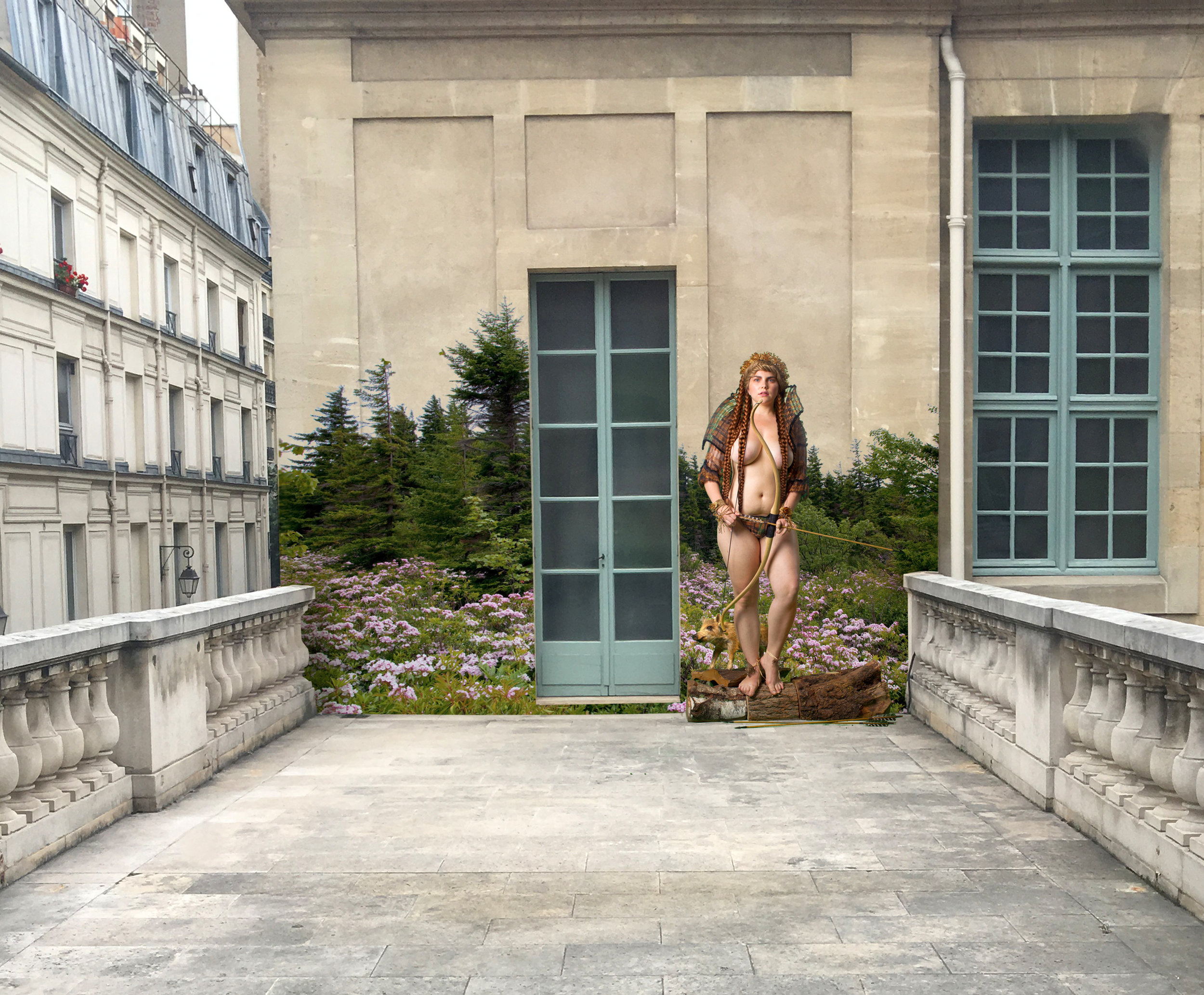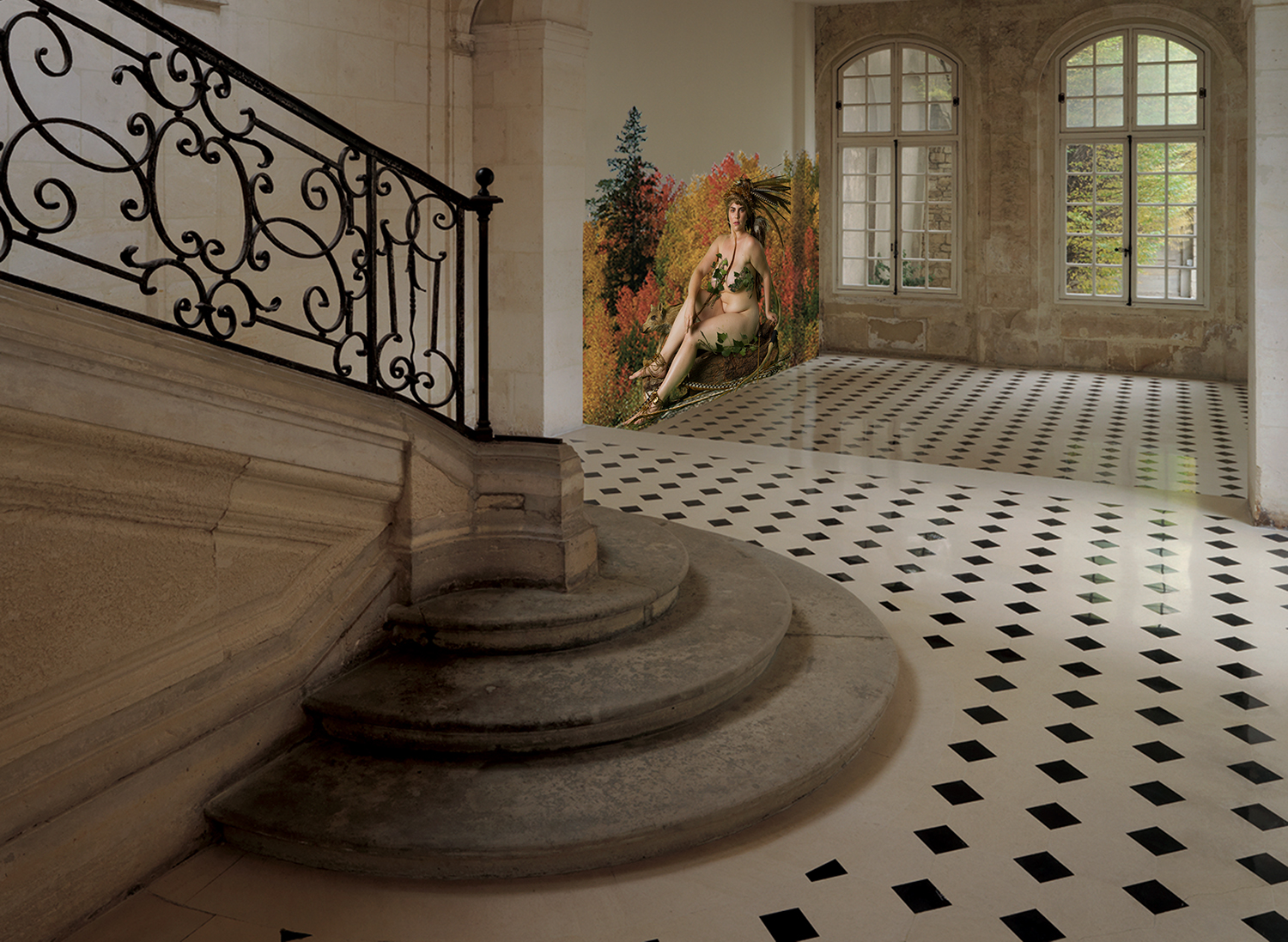After the catastrophe
DIANE CHASSERESSE
A Photo performance in the Musee de la Chasse et da la Nature by Iris Brosch , Normal Magazine Paris 2016
Text by David Goldenberg
Notes from the Director
Imagine a Modern Diane, as an idea of woman reclaiming the heart of Nature from civilisation historically shaped by the Male system. Here the new Diana, as a new woman, as a contemporary goddess, occupies her own system, every woman has the capacity to be a goddess and the power to change this planet.
At the end of this time and entrance into new time the living and the dead stand together.
How is a new creature, a new Diana, imagined at the end of time? What does this new time and new space look like? It is said that there is very little difference between now time, Paradise and Eden, and even the eternal return of the same which imagines the shift from now into new spaces for new humans? It is said to look exactly like everyday life but with a difference. What is this difference? You can see the new film posing this question.
We can see this new time civilisation the end of the catastrophe, the end of the destruction of animals, nature, the environment and the end of the long historical and unforgivable misuse of women.
But strangely enough Brosch is assembling her new woman, her new Goddess, at a time of renewed puritanism and prudery. But let’s say in this new time previous iterations of what we imagined was thought through and familiar breaks down, becomes irrelevant, how things and beings exist, and what being looks like, in this new time requires to be reimagined.
Brosch talks about the importance of deconstruction to the process of constructing her thinking and performance, to test the limits and habits of thinking. I understand this to mean the unmooring of thinking from its existing sclerotic references and concepts, by releasing a series of new imagery.
A start to reimagine this new topology is through celebrating the break with the Eurocentric male order, by breaking binary opposition of the sexes, where there is instead a blurring, mutation and expanded possibilities of human beings, this puts into question the terms and categories at our disposal, where what exists can only be evoked.
How does Brosch assemble her new Diane and new Goddess?
BACKSTAGE
The setting for imagining this new Diane is the 17th Century Musee de la Chasse. The narrative is organised by the movement through the Museums rooms, where the displays of each room, paintings, sculptures, weapons, musical instruments, stuffed animals, animal skins, tapestries acts as props, trappings, backdrops for a series of tableaus, often arranged frontally like a picture, going from one static arrangement to the next.
The film starts fully formed within the rooms of the Museum. And as with previous films by Iris Brosch the material of her art are very beautiful naked young people, often women, living sculptures and works of art. Their first appearance is as a group of naked warriors, and this group of interlinked women and men, are developed throughout in a constant changing pattern. All the tribes of women come together, so that not only are we witness to the evocation and enactment of warriors from Africa, North and South American, amazons from ancient Greece, we are also watching the slowly changing mutating construction of a new creature, where it is difficult to differentiate individuals from the group. So what is this group and who is Diane?
The language of the performance is set out from the beginning. Central is the notion of the hypnotic image. A spell, a type of setting, a type of picture, which pulls the viewer’s attention into the work and doesn’t release the viewer until it is finished, while influencing other work and space around it. This is complimented inside the image by the looks, expressions and gestures of the women, triggering enchantment, puncturing the veneer of the everyday, momentarily transporting us somewhere else. Each new pattern and configuration of bodies, with each new prop, animal pelt, black thigh high shiny boots, jewellery, hair design, makes that image even more full and luxurious, while at the same time celebrating and enhancing the sheer beauty and voluptuousness of the naked bodies.
Not only do these warriors carry spears, bows and arrows, flint lock rifles, in each scene the women are entwined with animal skins, animal trophies, stuffed stags and boars, animals linked to Diana. Sometimes the women imitate the movement of the animals, and quite often wear their skins to partially cover their naked bodies not only as trophies to celebrate their prowess but also by way of linking them to the spirit of the animal, so you sense there is a shamanistic ritual taking place, rituals to raise the dead animal. If we go along with this we can witness the building of further attributes of the female, a sort of aching fierce perfect physical form, aristocratic poise and dignity, princely and queenly qualities.
In the slowly changing configuration and patterns of human and animal parts from setting to setting, and from frame to frame, the notion of the extra, the addition and the difference to signal a new time a new space a new body is evoked, where the notion of animal and human become confused, but so does male and female. If we go one step further then the notion of animal and female break down, not to erode the female and the animal but to rethink and reimagine their being. This takes us deeper into existence, into being, coexistence and submergence into everything, in other words pure Immanence. Here we start to understand what is happening. Civilisation as the site primarily and exclusively for the human is dissolved and another site for being is conjured up, this is what I understand by Brosch notion of Diana tracing out a vision of living beyond civilisation civilisation within nature.
This seems to be particularly evident in the ornate hair arrangement worn by the women throughout the performance, and that seems to constantly mutate, whether in the form of a crown, classical headdress, branches, antlers, snakes; matched in several scenes by women moving small antlers around their bodies, that seem to both mirror internal organs and adding new attributes to the body. So we have a sense of motion. This to me has the appearance of the extra, the difference, which marks the new Diana, the new goddess, a new being, thinking physically mutating into new forms. So we imagine that the human form merging into being not arriving at the end of physical and psychical development but is instead at the threshold of further mutations, where this constant mutating unlocks the notion of something finished and completed, forms that allow us to try to imagine new capacities of the body, growing new organs, suggestions of capillaries spreading out into new regions of thinking and sensations. In other words, and I don’t think this is farfetched, we are taken to the very edge of thinking, of what is possible, of what can be imagined, where limitations are broken and we are pushed out to imagine the unthinkable.
David Goldenberg. 10.30.2016
INSTALLATION PLANS
Inauguré par André Malraux dans l’hôtel de Guénégaud (Monument historique du XVIIe siècle de François Mansart), le 21 février 1967, le musée de la Chasse et de la Nature a été étendu en 2007 à l’hôtel voisin, l’hôtel de Mongelas (XVIIIe siècle). À la faveur de cette rénovation et de cette extension, le musée « expose » le rapport de l’homme à l’animal à travers les âges (de l’Antiquité à nos jours) et s’appuie sur les exceptionnelles collections d’art ancien, moderne et contemporain réunies par les fondateurs et sans cesse augmentées depuis près d’un demi-siècle. Musée privé, il bénéficie du label « Musée de France » octroyé par le ministère de la Culture et de la Communication.
Les collections permanentes
Réunion d’œuvres d’art (peintures, dessins, sculptures, tapis, tapisseries, orfèvrerie, céramiques, armes, trophées, armures, meubles, objets d’art, installations, photographies,vidéos…) les collections permanentes sont présentées dans une muséographie originale associant les œuvres à des animaux naturalisés et à des éléments d’interprétation. Conçu comme un belvédère ouvrant sur l’espace sauvage, le musée permet d’appréhender – en plein Paris – l’animal dans son environnement. Cette proposition est fidèle à l’esprit qu’ont souhaité les fondateurs, celui d’une « maison d’amateur d’art
ENDANGERED SPECIES, ENDANGERED RIGHTS
I was always attracted by the images of Diane when I saw her in a museum or on a paint- ing with her deer and surrounded by her animal friends. I was really excited when I was con- tacted by Normal Magazine and invited by the Musée de la Chasse to realise a production in this beautiful hotel Particulier in the heart of Paris.
My intention was to create a modern Diane. A goddess of hunting and war, a goddess which protects and punishes, a woman who can be protective and a hunter at the same time. She is strong, she loves nature and cares about it. Diane is a feminine figure represented in the male universe of hunting. She lives in the middle of the dark forest, far away from any kind of civilisation and she’s is not afraid of descending deeply down into the obscurity of the forest. You can see her appearing close to a lake or a river in the nights, there you can find her where you rarely see any human being, and her light is shining! She is graceful,wild, and free!
All women in our days can learn from this Diane and become a little like her, like a goddess or a nymph. Being free from the limitation of what society has pushed on women for centuries, where we have just the position of adapting and being a decoration in a male system. It is time to create our own system, where nature and animals are living in harmony together with the human beings, far away from exploitation and destruction of nature, and the women soul and body. Women have the potential to heal the planet, we should stop to give ourselves to a male system, where we and up only like a trophy on a plate, on a “nature mort de gibiers”.
Iris Brosch
credits
NORMAL MAGAZINE www.normal-magazine.com
MUSEE DE LA CHASSE et de la NATURE www.chassenature.com
Set Designer and Production Stephane Blanc
Styliste, Britta Uschkamp
Hair, Dorah Doredte assisted by Christophe Pastel
Makeup, Walter Denechere assisted by Anna Delcroix
Retouche Juliette Gagnadre, Assistants, Mahé Elipe, Jennifer Schubert
Video Robin Deledicque,Backstage, Guillaume Delecroix, Laura Mateu, Katalin Szaraz
Modèles, Andja Lorein, Cassandre Dragon, Senta Schnabl, Annaelle Duguet, Alix Meier Watjen,
Fanny Beladonna, Raphael Lourel, Alexia Ranguin, Alayrangues Zoe, Rebecca Maraki, Sateaurelie Boga
Haute Jewellery Julien Fournié , Haute Couture Accesoires Anggy Haif, shoedesign Larare,
special thank you to Musée de la Chasse et de la Nature, Claude d'Anthenaise & Marie Christine Pestat et Ugo Deslandes & Karen Chastagnol
thank you to Pia Wiklund-Paillier and PROFOTO FRANCE team for lighting
